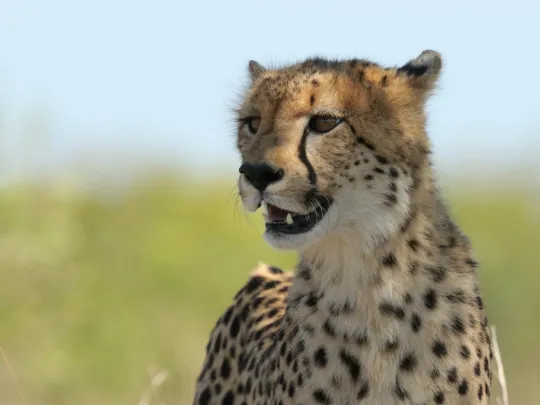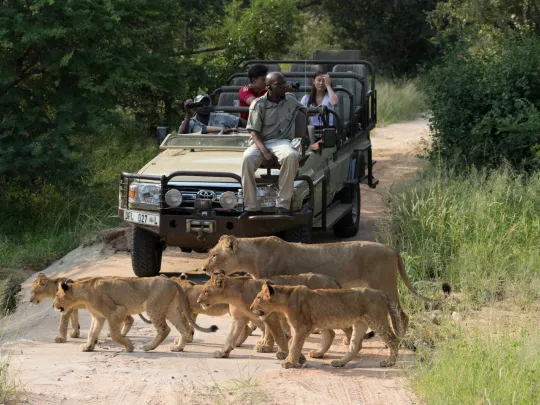6 Reasons Buffalos May be the Snarkiest Beasts on the Planet
Buffalos are formidable creatures belonging to the Bovidae family, with two primary species: the African or Cape buffalo and the Asian water buffalo. While often confused with the American bison, buffalos are distinct in their genus. Let's delve into six reasons that highlight their snarky reputation:
1. They're Big and They're Strong

Big and strong buffalo
A fully grown buffalo is an imposing presence, measuring between 1.8 to 3.4 meters (6 to 11 feet) in length and standing 1 to 1.7 meters (3.2 to 5.6 feet) tall. Weighing between 300 to 860 kilograms (660 to 1,900 pounds), these animals boast massive heads adorned with prominent bosses (horns), broad chests, and sturdy legs. Remarkably, a buffalo's strength is said to be four times that of an ox.
2. They're Dark, Moody, and Tough

A battle for dominance
Covered in brown-black hair, buffalos possess a thick hide that provides effective camouflage, especially in low-light conditions and the shady areas they frequent. Their neck hide is particularly tough and thick, offering protection during scuffles for dominance. However, it's not always sufficient against a lion's teeth.
3. They Can Take Company or Leave It

A cantankerous dagga boy
Buffalos exhibit flexible social structures, forming herds that can range from a dozen individuals to thousands. Typically, these herds consist of females, calves, and a few males. Older, more cantankerous males often separate from the main herd, forming smaller groups and indulging in mud-wallowing sessions. These solitary males are colloquially known as 'dagga boys'—a term derived from local languages referring to a cement or mud/dung mixture used in building. Lone buffalos are more vulnerable to predators like lions or opportunistic hyena packs.
4. They're Pretty Adaptable

Buffalos are strong swimmers
While buffalos are seldom found far from water sources, they thrive in diverse habitats, including open velds, woodlands, forests, and riverine forests. They are strong swimmers, capable of crossing rivers in pursuit of better grazing areas, and typically consume about 40 litres of water daily.
5. They're Fiercely Protective

Buffalos are fiercely protective
When confronted with danger, buffalos don't back down. They form protective circles around their young, old, and weaker members, bravely fending off predators. There are documented instances of buffalos using their robust horns to toss lions into the air and even chase them up trees. Their horns are powerful enough to rip open thick hides with ease.
6. They Never Forget a Wrong

Mother Love
Second only to elephants, African buffalos are renowned for their exceptional memory. They have been known to ambush and attack hunters who previously wounded or injured them—even years later. Buffalos are responsible for more hunter fatalities in Africa than any other animal. They've also been observed killing lion cubs from prides that have attacked and killed members of their herd in the past
More Quick Facts About African or Cape Buffalo:

A young buffalo calf
- Scientific Name: Syncerus caffer
- They have poor eyesight and hearing but possess an excellent sense of smell.
- The mating season generally occurs from March to May. After a gestation period of about 9 to 11 months, a single calf is born; twins are extremely rare.
- Buffalos are excellent mothers with exceptionally strong bonds with their young. A calf suckles for about a year and remains dependent on its mother during this period.
Did You Know?

Memorable buffalo herd roadblock on safari in Kruger
Many of our safari guests leave Kruger National Park with a newfound respect for buffalos. While they might not be as famous as lions or leopards, buffalo encounters on our game drives are often among the most memorable. Watching a powerful herd move in unison or witnessing a lone dagga boy cool off in a mud wallow is an unforgettable sight.
Buffalos seem to command an instinctive respect—perhaps because they've been revered for centuries. Ancient civilizations, like the San people of Southern Africa, depicted buffalos in their rock art, often associating them with strength, survival, and spiritual power. In some African cultures, buffalo horns are still used in rituals symbolizing protection and endurance. Whether in ancient lore or on modern safaris, these remarkable creatures continue to capture our imagination.
Think you know buffalo? Put your knowledge to the test and challenge your friends! Download the quiz now and share it to see who's the ultimate buffalo expert!
How Well Do You Know Buffalo A Fun Quiz
Want even more buffalo facts? We've got you covered! Check out 6 More Reasons to Love Buffalo – Fascinating Facts About Africa's Cape Buffalo and deepen your appreciation for these incredible animals.
You may also want to look at

6 More Reasons to Love Buffalo – Fascinating Facts About Africa's Cape Buffalo
Buffalos often get overshadowed by Africa's more famous wildlife, but these resilient, intelligent, and powerful creatures deserve admiration. As one of the Big Five, Cape buffalo have a reputation for their formidable nature—but there's so much more to appreciate beyond their strength and survival instincts.

Best Places To See Rhinos, Leopards, Cheetahs or Wild Dogs
What are the best destinations to see rhinos in Africa? What about some of the more elusive predators, such as leopards, cheetahs or wild dogs? These animal species are not equally common everywhere, and it helps to know where you might be most likely to see them.

7 Great Ways to Get the Best Wildlife Viewing Experience
So you've finally made it. Tickets booked, safari itinerary done and dusted. Counting the days … but how will you enjoy the actual game viewing experience?
About the author

A 'word smith' or copywriter with over 25 years experience, love travelling, wildlife and conservation; fascinated by alternative energy, alternative building and alternative health. Consummate reader and traveller, both internationally and southern Africa. Have two remarkable daughters that continue to amaze and teach me daily. Consider myself privileged to live on the best continent on the planet.









